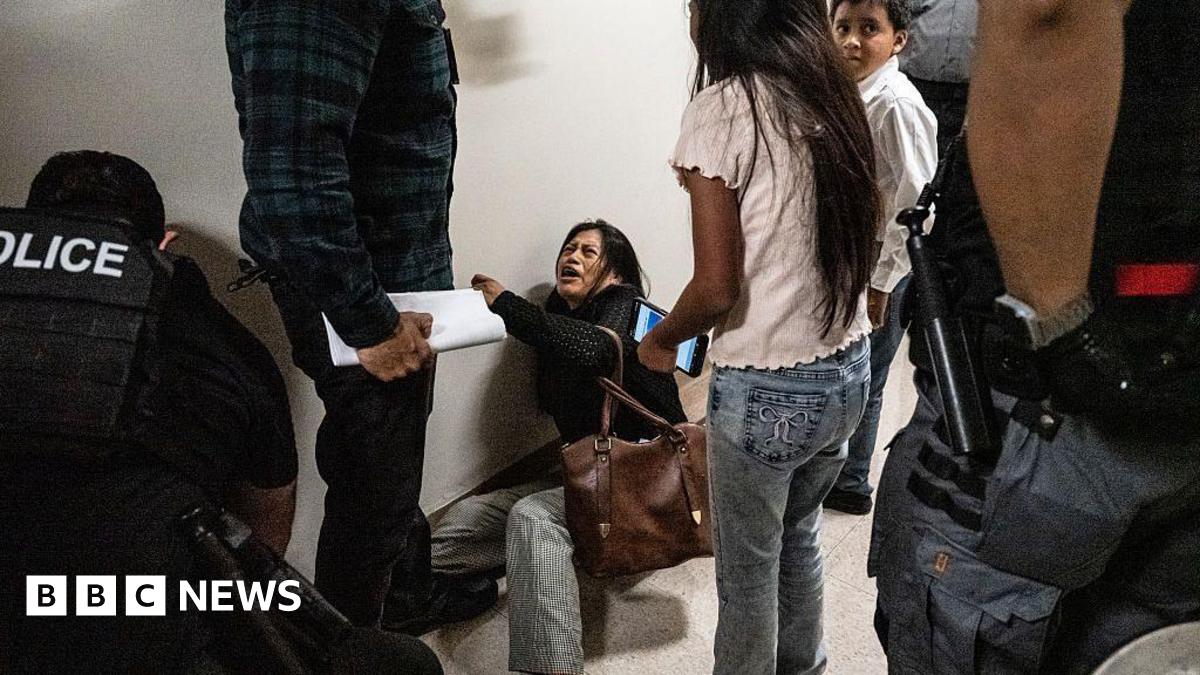DHS spokeswoman Tricia McLaughlin told the BBC in a statement that officers were making an arrest when they were “swarmed by agitators and members of the press, which obstructed operations”.
Ms McLaughlin said that “officers repeatedly told the crowd of agitators and journalists to get back, move, and get out of the elevator”.
Chaotic encounters with government officials have played out multiple times in the lower Manhattan building this year, as immigration courts become key sites of a mass deportation initiative ordered by the Trump administration.
Half of the 3,320 immigrants ICE has detained in the New York City area between Trump’s inauguration and the end of July were arrested at 26 Federal Plaza, according to data obtained by the Deportation Data Project. The numbers suggest the building’s immigration courts and offices are a primary engine of the administration’s deportation plans in America’s biggest city.
About three quarters of people arrested at 26 Federal Plaza since Trump’s inauguration did not have past criminal convictions or pending criminal charges, the Deportation Data Project numbers suggest.
Officers routinely pull multiple detainees from their hearings, without giving them the chance to speak to lawyers.
“We’ve never seen anything like this,” said Benjamin Remy, a NYLAG lawyer who spends several days a week working with immigrants at Federal Plaza.
Many immigrants no longer show up to court, he said. At one August hearing, a man with a criminal record failed to appear. The judge therefore ordered him removed from the country and threw out his asylum case.
His attendance may not have changed the outcome; immigration enforcement was assembled outside that courtroom as well.
Non-citizens in the US without a visa or similar documentation have always been subject to removal, said Triciah Claxton, supervising attorney with Safe Passage, an immigration rights group focused on minors.
“There used to be a concentrated effort on those who might have had criminal histories or prior arrests,” said Ms Claxton, whose clients mostly appear virtually to avoid detention.
But now, she said, that net appears to have widened.
“You see a lot of people who are in the process – they have asylum claims pending, they have other forms of relief pending – are still being taken in,” Ms Claxton said.
